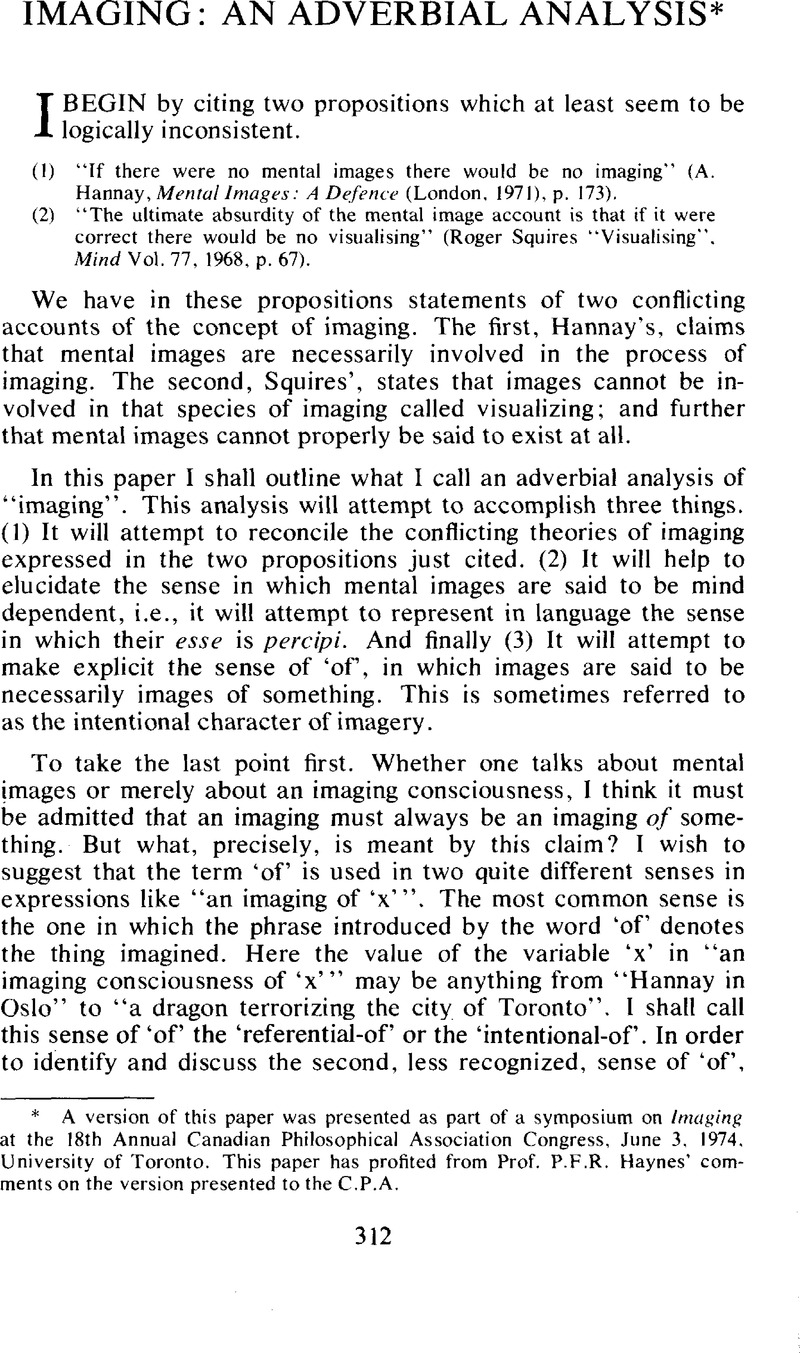Published online by Cambridge University Press: 01 June 1975

1 S. Alexander, Space, Time, and Deity, (London, 1920), vol. I, p. 12.
2 Ducasse, C. J., Nature, Mind and Death, (La Salle, 1951), p. 254Google Scholar.
3 Ducasse calls this a connately coordinate or a coordinately connate accusative, cf. Nature, Mind and Death, p. 255.
4 These Ducasse refers to as connately subordinate or subordinated connate accusatives, cf. loc. cit.
5 The ‘appositive-of’ and Ducasse's distinction between connate and alien accusatives are also helpful in explicating Sartre's notions of reflexive awareness and the illusion of immanence. See my “Prolegomenon to a Phenomenology of Imagination”, Philosophy and Phenomenological Research, (forthcoming).
6 Dialogue, Vol. XII No. 1, March 1973, pp. 164–166.
7 Price, H.H., Thinking and Experience, (London, 1953), p. 248Google Scholar.